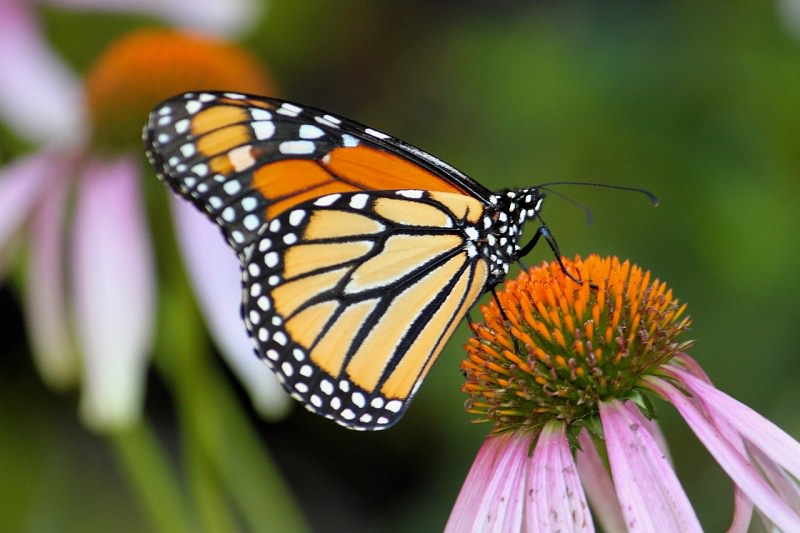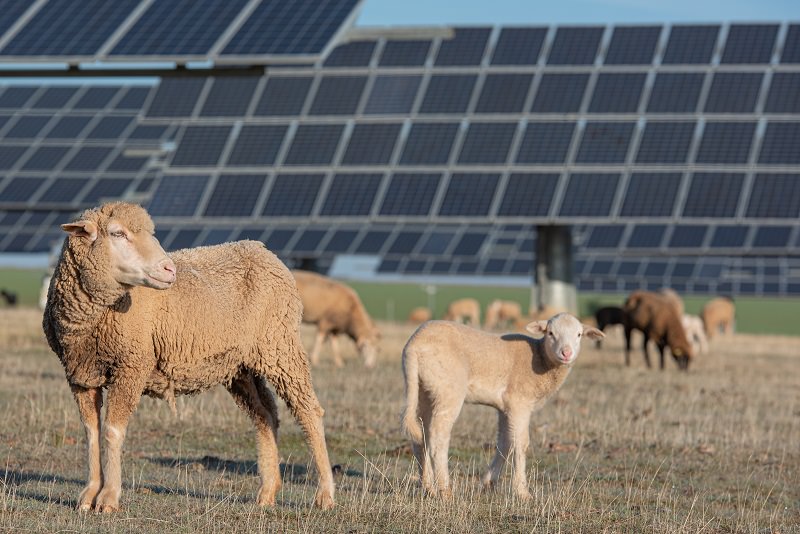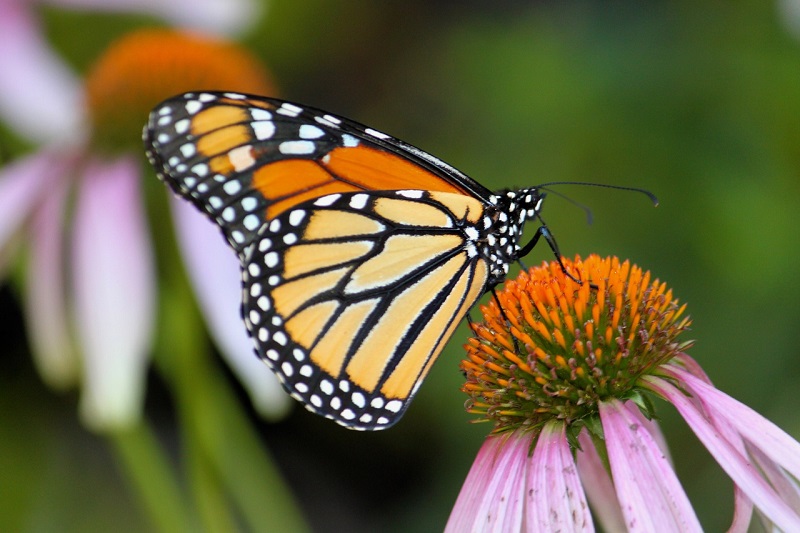A big concern with large-scale solar farms is the impact on land use. Solar developers often site projects on agricultural land that is taken out of production. Also, the vegetation around solar panels needs to be maintained to prevent shading. In some cases, herbicides are used, contaminating waterways, and mowing generates pollution. If the developer applies gravel or plants turfgrass, the land has little wildlife value.
As the local food movement gains steam, isn’t it counterproductive to turn productive cropland into an energy plant? How can the solar energy industry embrace biodiversity while producing clean energy? Is dual use of a solar site possible?
Solar farms can be managed to increase pollinator habitat, improve soil quality, and even for livestock grazing. Innovative land management approaches enable solar projects to serve multiple purposes, benefitting the local economy. Keeping honeybees, grazing sheep, and even cultivating mushrooms can all complement a solar energy project.

Native Wildflowers Boost Pollinator Habitat
Researchers with the Argonne National Laboratory are examining the economic benefits of establishing native vegetation, including wildflowers and prairie grasses, on nearby cropland. Native vegetation attracts crucial critters like bees, flies, bats, birds, wasps, moths, and butterflies, which can be beneficial to crop yields.
Researchers with the Argonne National Laboratory are examining the economic benefits of establishing native vegetation on nearby cropland, including wildflowers and prairie grasses. A diverse array of native plants benefits wildlife diversity, especially pollinators. These crucial critters include bees, flies, bats, birds, wasps, moths, and butterflies, and can be beneficial to crop yields.

Native plants attract pollinators, which benefit crop yields. Image courtesy of Michael Roberts, Pixabay
Numerous crops need insect pollination, including soybeans, cranberries, and almonds. Yet, a combination of habitat loss and pollutants have caused pollinator populations to plummet. Argonne National Laboratory researchers say that promoting pollinator populations around solar farms can help increase crop yields for nearby farmers.
Another benefit: Long-term maintenance costs and environmental degradation of native plants are often less than growing turfgrass around the panels. Once established, these plants prevent soil erosion, promote soil quality, and don’t require as much maintenance as turfgrass. Native plants tend to be drought-resistant, thus not requiring irrigation. Conversely, turfgrass may need to be irrigated and it requires regular mowing to prevent it from shading the solar array.
Grazing Livestock at Solar Farms
The dual-use of livestock grazing and solar energy production is on the rise. Sheep are an ideal match for “solar grazing” because they do an excellent job of maintaining vegetation under panels that might be removed using herbicides or weed wackers. The solar panels also provide shade and a windbreak for sheep, creating a symbiotic relationship.
Dual-use of the site produces more revenue streams from the same property by producing meat, dairy, or wool. Solar grazing also allows farmers to expand their flocks without purchasing more land and promotes soil fertility.
Conversely, mowing has its drawbacks. Exhaust pollutes the air, and unlike sheep, mowers are often too tall to get underneath the panels. Steep or rocky sites can be difficult to access with mowing equipment, and it can damage panels.
Using the land at solar farms for agriculture and wildlife habitat can benefit solar developers, farmers, wildlife, and local communities.

Sheep maintain the vegetation under panels, while the panels provide shade and windbreak for the sheep.
Producing Mushrooms Under Solar Panels
Japan imports the majority of its food, and agricultural production is relatively low. Some farmers are taking an innovative approach to food and energy production by growing cloud-ear mushrooms under the solar panels.
Mushrooms thrive in the low light, high humidity environments that can develop under solar arrays. The shade creates a suitable environment for these mushrooms that are typically imported from China.
Researchers at the University of Massachusetts are investigating the cultivation of a wider array of crops, including kale, peppers, Swiss chard, beans, and broccoli, under panels mounted nine feet up in the air. Their goal is to determine how farmers can continue producing food while generating solar electricity.
“Our philosophy is that we can put solar panels out in a field to help support the economics of a farm, while still keeping productive land in agriculture,” says Steven Herbert, professor of Agronomy with the Stockbridge School of Agriculture. Further research is needed to determine all the possible applications of “agrivoltaics.”
How to Promote Agrivoltaic & Wildlife Habitat
Solar farms are being installed throughout the United States. Local citizens can often provide feedback on these projects during the permitting process. It is even possible to incorporate native wildflowers or solar grazing at existing solar farms. Voicing your support for agricultural production and native fauna enables solar farms can help make these practices more widespread. Resources exist to help promote dual-use, including the Solar Site Pollinator Scorecard and the American Solar Grazing Association.
The post Can Solar Farms Promote Local Food Security, Wildlife Habitat? appeared first on Earth 911.








